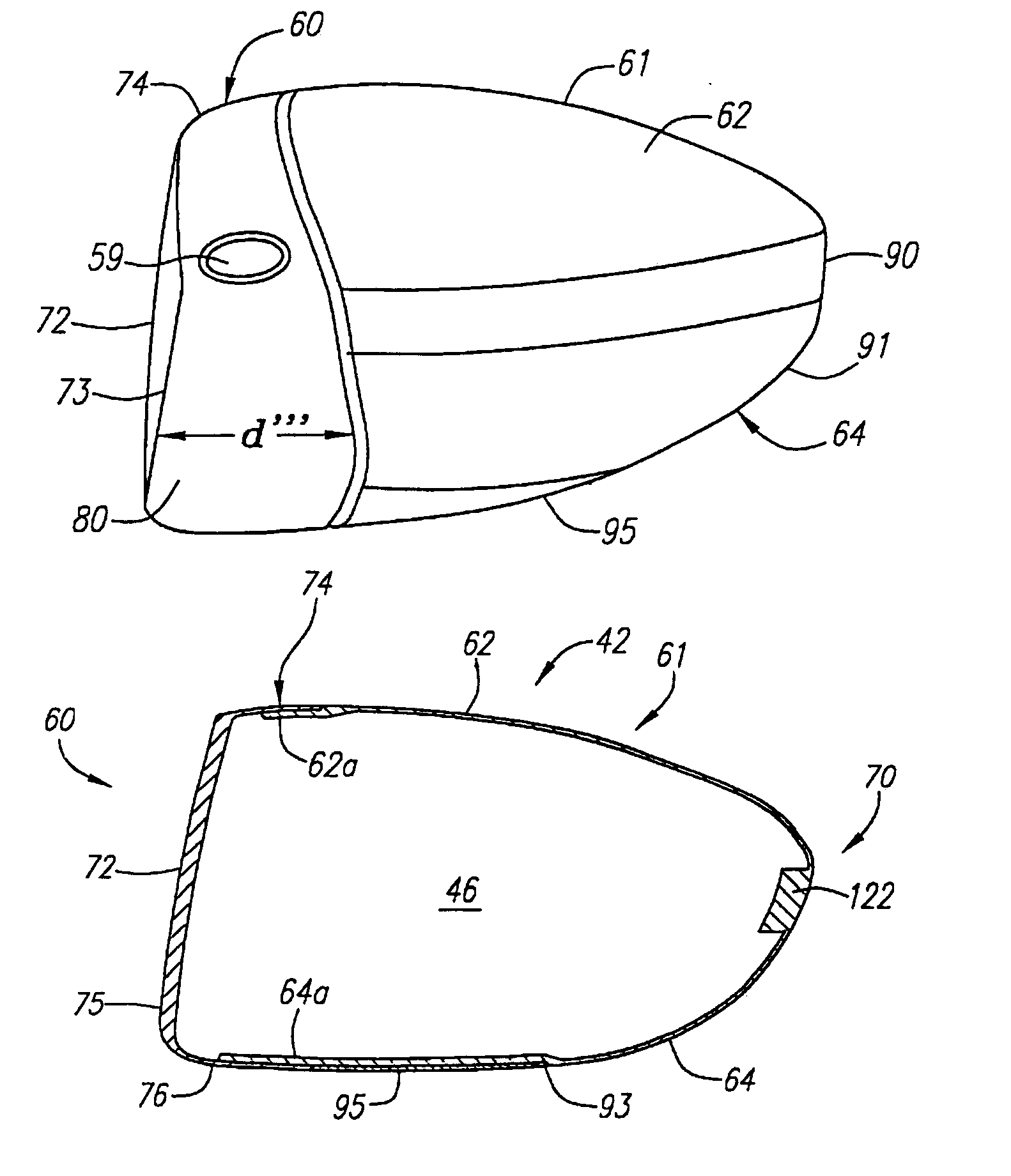Bonded joint design for a golf club head
a golf club and design technology, applied in the field of golf club heads, can solve the problems of increasing the energy transfer problem, reducing the durability of the bonded crown joint, and reducing the shear and peel stress, so as to reduce the stress, increase the durability of the bonded crown joint, and reduce the stress
- Summary
- Abstract
- Description
- Claims
- Application Information
AI Technical Summary
Benefits of technology
Problems solved by technology
Method used
Image
Examples
Embodiment Construction
is a 430 cubic centimeter golf club head 42 with the total club weighing 270 grams. The face component 60 is composed of a cast titanium, Ti 6-4 material. The aft body 61 is composed of a plurality of plies of pre-preg. The golf club head 42 has a loft angle of eleven degrees and a lie of 54 degrees. The bulge radius is 11 inches and the roll radius is 10 inches. The vertical distance "h" of the club head of example 1 is 2.14 inches, and the distance "w" is 3.46 inches. Example 2 is a 510 cubic centimeter golf club head 42 with the total golf club weighing 285 grams. The face component 60 is composed of a forged titanium alloy material, Ti 10-2-3. The aft body 61 is composed of a plurality of plies of pre-preg. The bulge radius is 11 inches and the roll radius is 10 inches. The vertical distance "h" of the club head of example 2 is 2.54 inches, and the distance "w" is 3.9 inches. Example 3 is a 385 cubic centimeter golf club head 42 with the total golf club weighing 198 grams. The f...
PUM
 Login to View More
Login to View More Abstract
Description
Claims
Application Information
 Login to View More
Login to View More - R&D
- Intellectual Property
- Life Sciences
- Materials
- Tech Scout
- Unparalleled Data Quality
- Higher Quality Content
- 60% Fewer Hallucinations
Browse by: Latest US Patents, China's latest patents, Technical Efficacy Thesaurus, Application Domain, Technology Topic, Popular Technical Reports.
© 2025 PatSnap. All rights reserved.Legal|Privacy policy|Modern Slavery Act Transparency Statement|Sitemap|About US| Contact US: help@patsnap.com



